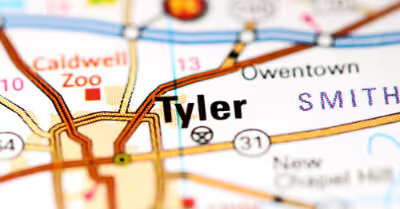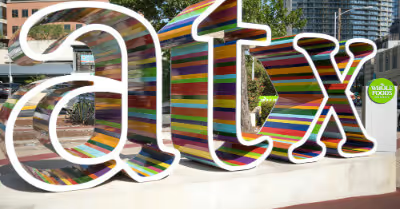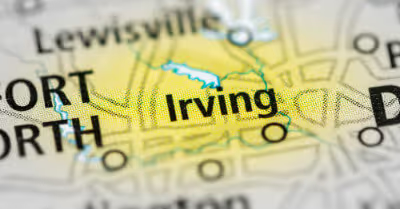Table of Contents
What Is the Best Home Automation for the Elderly & Disabled?
Thanks to the vast improvements that are constantly being designed in the tech world, we are all now benefitting in some way or another from devices that are making our home life easier.
From doorbells that connect to our phones to show us who is ringing them, to speakers that can record our shopping lists and remind us when we are out of something, technology continues to advance and make our daily tasks easier and safer.
Technology allows us to do things more quickly and efficiently while freeing up time for us to do other things with our time.
Technology allows us to be more productive as well.
Even though we’ve all learned to appreciate and rely on different forms of home automation, there are two groups that may be able to benefit from it the most - the elderly and the disabled.
For years, elderly individuals and those with disabilities have had to rely on other people for some of even the most mundane tasks.
Whether they are lacking in range of motion, eyesight, body strength or have experienced memory loss, both the elderly and disabled have had to struggle just to be able to care for themselves without help.
In fact, one of the most common reasons that an elderly loved one or a disabled family member is put into an assisted living facility is because no one in their circle of family or friends is capable of caring for them.
Maybe it’s time constraints that make it hard for the older family member or the disabled one to get the care they need.
Or sometimes the older family member or disabled one doesn’t want the extra care and they are trying very hard to continue to live on their own and maintain their independence.
Whatever the reason, the point is this…
Home automation technology is making it easier and easier for elderly and disabled loved ones to continue to live on their own and have the independence they crave, while also staying safe and still being able to stay connected to others.
The challenge may lie in trying to decide which home automation services are best for you or your loved one. The options are starting to feel almost limitless, and there are new products rolling onto the market every day.
From kitchen automation that makes preparing favorite foods a breeze, to safety features that will alert someone in a different place if there has been an accident, the options for installing home automation devices are about as varied as your needs and imagination can be.
As I said earlier, I recently went through this process with my mother-in-law. We spent time figuring out what exactly she was going to need to be able to continue living independently.
Then, we researched the various home automation devices and chose the ones that best fit her needs and budget.
Let’s look at some of the best home automation devices that are available today and see if any of these will make your elderly or disabled loved one’s life more safe and simple.
1. Lighting and Temperature Controls
Perhaps the most essential (and easiest!) home automation modification you can make is with lighting and temperature controls.
With today’s advanced technology, any light in a person’s home can be controlled by a smartphone.
There are lighting kits available at all the large retail stores, or you can also purchase them online.
And though they are pretty straightforward when it comes to installation, there are plenty of companies that can also do this for you.
Once the lighting is set up and connected to the person’s wifi, there are endless options when it comes to what they can do with it.
Some may want their bedroom, hallway, or kitchen lights to turn on just before they wake up in the mornings.
Others might want the bathroom light to come on the moment they step onto the bathmat.
There’s also the option to have lights that automatically shut on or off at certain times of the day with either a remote control or even voice commands.
This same technology is available for thermostats as well.
We’ve all gotten used to having programmable thermostats that we can set to different temperatures throughout the day. But now, thanks to more advanced home automation technology, we can also have thermostats that heat or cool by either voice activations or an app on our phones.
Anyone who is struggling with eyesight or mobility issues would greatly benefit from lighting and thermostat control being some of the first things to consider when you are looking for some of the best home automation for your elderly or disabled friends or family members.
2. Powered and Disability Assisted Cupboards and Appliances
Another fantastic feature that is available for those who are elderly or disabled is the vast number of appliances and automated cupboard devices that can be installed to help those with limited strength or range of mobility.
Appliances that are ADA (Americans With Disabilities Act) compliant are not the newest technology on the market. Many people with disabilities have been fortunate enough to have one or two of these in their homes to make caring for themselves easier.
But with the onslaught of home automation systems, there are more options now than ever before.
GE makes an entire line of stoves, dishwashers, and even washers and dryers that can be easily opened with the touch of a button or even a remote control.
One of the most innovative home automated appliances is the GE Smart refrigerator.
By connecting this refrigerator to your home’s wifi, a person who is experiencing memory loss can keep track of items in the fridge that need replacing, keep a running grocery list on the front screen, and can even have recipes read to them while cooking from the widescreen on the front panel.
Another best home automation for independence in the kitchen is the ability to control cupboards and shelving units remotely.
By installing tracking on certain hard-to-reach cupboards, elderly or disabled individuals won’t have to worry about reaching items in cabinets and cupboards that are too high. Specialized tracking that is controlled by an app on their phone will allow them to bring the shelving unit down to a reasonable height, then raise it again when they’re done.
This type of home automation tracking device means that someone who struggles with full range of motion can still access the things necessary to them, but also maintain a look in their kitchen that is appealing and fully allows all cabinet space to still be used effectively.
3. Alert and Emergency Notification Devices
Installing alert and emergency notification devices in the homes of elderly or disabled family members is not a new concept.
In fact, most people who live alone and have some sort of medical or physical limitation probably already have some sort of emergency alert system available to them, if for no other reason than their family's peace of mind.
But, recent technology has taken alert and emergency notification devices to a whole new level.
Some of the best home automation alert and emergency notification devices make it almost feel as if the person living in the home has a virtual assistant by their side.
You can customize these notification devices to suit your loved one’s particular situation. And, many of the best ones are designed to be able to be modified as needed.
For example, if you have an elderly family member who is prone to falls, but is not good at wearing a monitoring device, you can use monitoring cameras to keep an eye on their activity.
Tenvis makes a camera that allows you to see clips when there is excess motion, meaning you won’t be spying on their every move, but will be able to see if an elderly or disabled loved one has fallen. So, if they are sitting and watching television, the camera will not record. Once there is substantial movement, you’ll begin getting video clips again.
Another innovative device for home automation is motion-detecting floor mats that will alert you when a family member is on the move.
If you have an elderly or disabled person who tends to wander unexpectedly, these mats can let you know when they’ve left a room, an apartment, or their home.
These are great for keeping tabs on someone’s coming and going without being overly invasive to their privacy.
You can also turn the mat off whenever you need to with just a toggle on your smartphone.
4. Door and Window Entry Control Devices
Another highly popular and necessary feature for those elderly or disabled folks who want to continue to live a life of independence is to install a door and window entry control device in their home.
Gone are the days of having to have multiple devices for each door or window.
Now, thanks to some amazing advances in the area of entry control options, a loved one who is physically, medically, or mentally challenged can easily maintain their independence while also staying safe.
There is a wide range of door handles that now can be opened with a programmable code instead of having to keep track of a set of keys.
And, if your elderly or disabled family member forgets the passcode to unlock the door, you can install an app on your phone that allows you to open it remotely for them.
These door handles are ideal, because they also self-lock each time they are opened, so you never have to worry about your loved one forgetting to lock the door when they leave or return.
Another advanced home automation feature that is now widely available are doorbell cameras.
Doorbell systems such as Ring have sprouted up in neighborhoods and residential streets all over America. Many of us use these wireless doorbell cameras to keep track of packages, monitor who is coming and going, and provide us with the ease of mind that we can keep tabs on our own safety.
For someone who is elderly or disabled, not only is a system like Ring convenient, but it may also give them the full ability to live alone.
Not only can they monitor what’s happening outside their door, but they can also combine this automation technology with an automatic door opener.
This means that a person who struggles with mobility could answer their door from a completely different room, saving them time and energy when a guest arrives.
And, thanks to the camera that shows a photo of the visitor straight onto their cell phone, they’ll never answer a door without knowing who is on the other side.
Another great feature of installing a doorbell camera and auto-opening devices is that it also means you can see who is coming and going from your loved one’s home on your own smartphone.
By having the same app installed on your phone as is installed on theirs, you can monitor who may be visiting your family member and serve as a second level of security if there is ever an instance that you feel they may be opening the door to someone that they shouldn’t be.
5. Automatic Curtains and Blinds
When I wanted to install a home automation system for my mother-in-law’s curtains in her living room and blinds in her bedroom, I received some pushback from other family members.
Many of them didn’t think the cost would be worth the small amount of added convenience and would maybe never even be used.
But I held my ground, and I am glad I did!
Having a home automation system for curtains and blinds may not seem like the very top priority in making a home livable for an elderly or disabled person.
But, it is actually an ingenious solution to yet another problem for many who don’t have the range of mobility the rest of us do.
By installing remote and automated devices to a person’s window treatments, it means they will have much more access to opening and closing their curtains and blinds than they did before.
Many older individuals won’t take the time to open their window treatments in the morning. Oftentimes the pull or turn handles are difficult to maneuver with their stiff hands, or they are not easily reachable.
This means that a person could spend the entire day, sitting in the dark, never getting needed sunlight or a chance to see the world outside their four walls.
By installing remote control curtains and blinds throughout their home means that - with just a touch of a button - they can let the light in every morning, while also giving themselves the extra privacy of closing their curtains and blinds at night.
But – if your elderly or disabled loved one is like my mother-in-law, having a remote control may not be enough.
Because of her memory issues, we decided that she would still struggle to remember to open her curtains in the morning.
By installing smart curtains that can be programmed to open and close at certain times of the day, we were able to ensure that she would get the light she needed, and the security necessary at nightfall.
The great thing about these curtain and blind systems is that - like with some of the other products mentioned - they can either be set to open and close at a specific time every day, or they can be remotely controlled, even by someone in a different home than where the curtains and blinds are installed.
This type of advanced home automation has made being able to live independently substantially easier and safer for elderly and disabled persons everywhere, regardless of their home situation.
Recent Articles
















